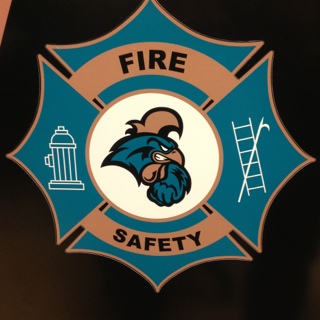Information
-
Weekly/Monthly Fire Pump Inspection & Test Report
-
Document No.
-
Building Name
-
Address
-
Conducted on
-
Inspection Report Prepared by
-
Personnel
General Information
-
Information on this form covers the minimum requirements of NFPA 25 (2014) for electric-driven vertical fire pumps. Separate forms are available to inspect, test and maintain the rest of the fire protection system of which the fire pump is a part.
-
Building Name
-
Add location
-
Type of fire pump
-
Diesel Powered
-
Electric (Horizontal)
-
Electric (Vertical)
-
Date of Inspection:
-
All responses refer to the current inspection performed on this date.
-
A. Is the pump in service?
-
B. Has the fire pump remained in service since the last inspection?
Weekly Electric Fire Pump Inspections
-
Date of weekly inspection.
-
1) Is pump room heated to at least 40 degrees?
-
3) Valves are open and free of leaks?
-
4) Piping is free of leaks?
-
5) Controller is in automatic start mode?
-
6) Transfer switch is in normal position?
-
7) Suction and system pressure gauges normal?
-
Record suction pressure while pump is NOT running.
-
Record discharge pressure while pump is NOT running.
-
8) Oil level in vertical motor sight is normal?
-
Record notes here.
-
Include photos here if necessary.
Fire Pump Churn Test (No Flow)
-
Weekly for diesel pumps for 30 minutes.
-
Weekly for vertical electric pump for 10 minutes.
-
Monthly for horizontal electric pumps for 10 minutes.
-
Date of test.
-
Notify monitoring company prior to test.
-
1) Fire Pump is in auto position?
-
2) Jockey pump is in auto position?
-
Record jockey pump start-up PSI
-
Record jockey pump shut-off PSI
-
3) Fire Pump started automatically?
-
4) Fire pump operated for at least 10 minutes?
-
Record suction pressure while running.
-
Record discharge pressure while running.
-
5) Did suction tank overflow to indicate it was full?
-
6) Pump packing gland showing slight discharge?
-
7) Pump is free from unusual noises or vibrations?
-
8) Packing boxes, bearings and pump casing free from overheating?
-
9) Were relevant alarms successfully received by the monitoring company?
-
10) Was pump successfully reset to auto start mode and was monitoring company notified when test was completed?
-
Record notes here.
-
Include photos here if necessary.
Monthly Electric Fire Pump Inspections
-
Date of monthly inspection.
-
1) Circuit breakers, boxes and panels of electrical system are clean?
-
2) Circuit breakers and isolation switch exercised?
-
3) Electrical wires are free of chafing?
-
4) Transfer switch is exercised?
-
Record notes here.
Weekly Diesel Powered Fire Pump Inspections
-
Date of Weekly Inspection
-
Fuel level is at least two-thirds full.
-
Tank float switch operates properly.
-
Solenoid valve operates properly.
-
Fuel system is free of water.
-
Flexible hoses and connections are in good condition.
-
Oil levels are satisfactory.
-
Lube oil heater is in good condition.
-
Cooling system fluid levels are satisfactory and system is working properly.
-
Jacket water heater is in good condition.
-
Water pump is good condition.
-
Exhaust system is free of leaks.
-
Drain condensate trap is in good condition.
-
Battery electrolyte levels are satisfactory.
-
Cranking volts exceeds 9 volts on a 12 volt system.<br>(18 volts on a 24 volt system)
-
Battery terminals are free of corrosion.
-
Electrical system wires, connections and other components are in good condition.
-
Circuit breakers or fuses are in good condition.
Inspector's Information
-
Company: MacKenzie Services
-
I state that the information on this form is correct at the time and place of inspection, and that all equipment tested at this time was left in operational condition upon completion of this inspection.
-
Add signature
-
Select date












